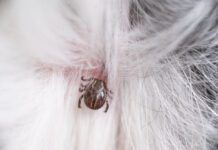The Virginia-Maryland Regional College of Veterinary Medicine and Wake Forest University’s Institute for Regenerative Medicine in Winston-Salem, North Carolina, signed an agreement in January to form the Virginia Tech/Wake Forest Center for Veterinary Regenerative Medicine (CVRM).
The goal is to facilitate the use of cutting-edge, regenerative (stem cell) treatments for pets and people. Clinical trials performed at the center will provide valuable information concerning the effects of stem-cell therapy. Doctors will be able to evaluate the results as a model for the treatment of similar diseases in humans.
As part of the collaboration, clients at the Veterinary Teaching Hospital may have the option to enter their pets into clinical trials, giving them access to cutting-edge technology unavailable elsewhere.
Current areas of interest for this research include cardiomyopathy and spay-induced incontinence in dogs, chronic kidney disease in cats, and wound healing in horses. Let’s hope they also investigate the use of regenerative stem cell therapy in the treatment of arthritis, where preliminary results seem promising.
There are many potential applications for collaboration between human and veterinary medicine. In March, I wrote about a veterinary surgeon, a veterinary endocrinologist, and a neurosurgeon at Cedars-Sinai Medical Center in Los Angeles who worked together and developed a new surgical technique for treating pituitary tumors that cause Cushing’s disease in dogs (“New Treatment for Pituitary-Dependent Cushing’s Disease”). In September 2009, I wrote about a treatment for brain tumors that was the result of two comparative oncology specialists working together, one a veterinary surgeon and the other the head of his university’s Neurosurgery Gene Therapy Program (“New Therapy for Brain Cancer”).
I applaud this approach to finding new treatments for pets and people. It is so much better to offer clinical trials for pets with diseases that cannot be effectively treated with today’s methodologies, rather than induce illness in laboratory animals in order to try out new treatments. I hope this center becomes a model for other veterinary schools.
– Mary Straus
For more information:
Virginia-Maryland Regional College of Veterinary Medicine
www.vetmed.vt.edu/news/regenmed.asp




